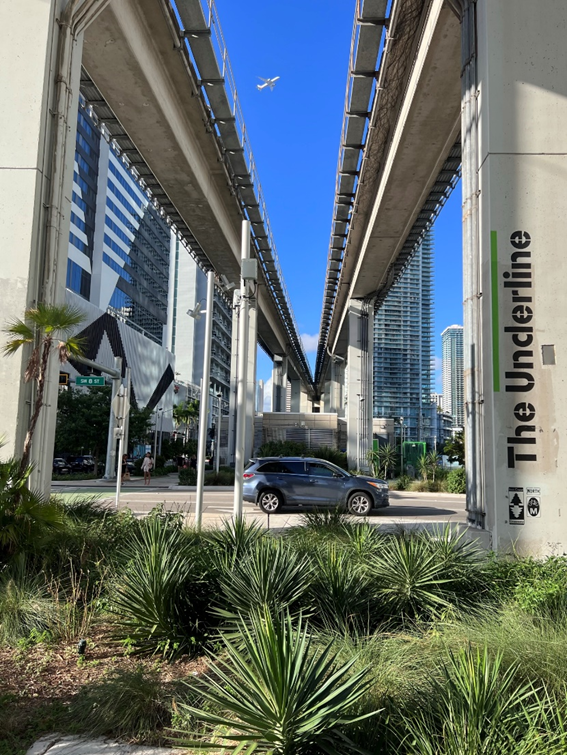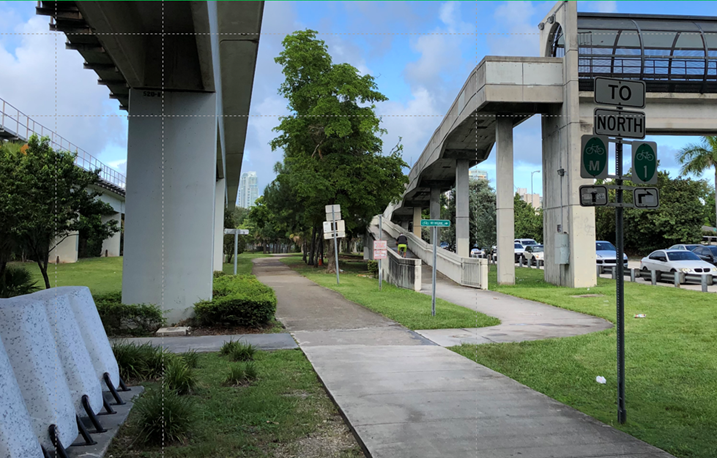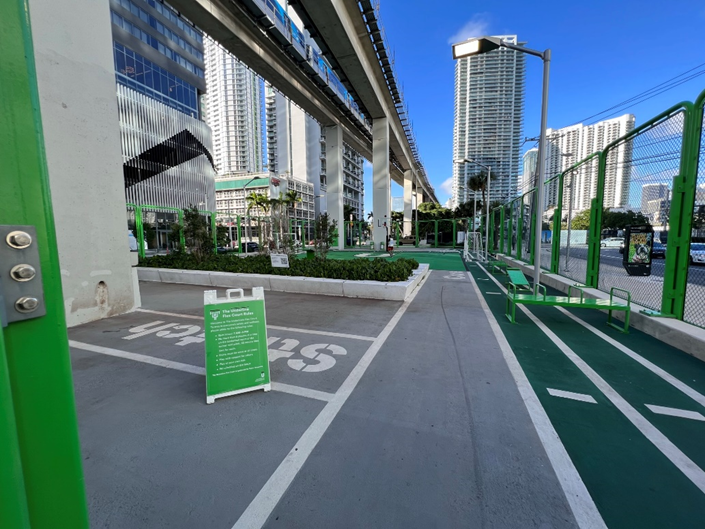When I think about Miami, I’ll usually associate it with the bits and pieces of pop culture embedded in me from my childhood years. Due to my slightly advanced age, that means Crockett and Tubbs, Ferrari Testarossas, Versace, and Grand Theft Auto: Vice City. Those will likely stay with me forever, but fortunately a recent trip to Miami allowed Urban Design Center staff to file away some incredible urban design precedents — one of which I’ll dive into here.
At the recent Rail-volution (now Mpact) Conference held in Miami, Miami-Dade county’s efforts to move toward a 21st century mobility future were in plain sight. For those not familiar, Mpact bills itself as “the hub and spark for a network of leaders, practitioners, and advocates inspired by the potential for major transit investments to shape more vibrant and equitable communities”. So, the focus was about transit, right? Absolutely not! It placed emphasis on all areas of mobility and those that support and benefit from mobility — from the types of the new developments created around stations, the activation of space around transit, and the consideration of investment impacts on surrounding communities.

Urban designers foreground the ways people experience place — so we pay special attention to mobility and the positive impacts that transportation options have on the built environment. Investments in mobility — from rail to bus rapid transit, to dedicated bike lanes and sidewalks — create communities that people want to experience and help transform undefined spaces into identifiable places where community members can thrive.
A tour of Miami’s Underline reminded me of the work we are completing at the Urban Design Center and the resulting question I’ve been asking myself — “how do we turn a space into a place”?
I recently developed a series of images to illustrate the incremental activation of open space — essentially a simplified 5-step process to turn a space into place. David Walters, an architect, urban designer, and former Director of the Master of Urban Design program at UNCC responded to those images by describing how he explained the idea of “place” to his students. He wrote “Place is space enriched by the assignment of meaning.” Further explained, there must be a deeper human agenda than superficial geometry, and that meaning is generated by human activity at the edges of each urban room.”
The Underline — a linear park nestled under the elevated trackways of Miami’s transit lines, has created a series of connected “urban rooms”.
Its previous condition could generally be described as “serviceable” when viewed through a mobility lens. It provided wide connections to surrounding points of interest and was sometimes planted with trees and grasses. The one-dimensional nature of the area, as well as its potential, was realized by the Underline founder when she noticed the shade cast by the elevated track was keeping her cool during the sweltering Miami summer. She also noticed how much useable area was available to people — and that in a city of a half-million people (and a metro area of over 6 million!) she was the only one using it.
And so began the transformation of space into place.

The Underline’s first phase, a half-mile long pathway through Miami’s Brickell neighborhood, was completed recently completed and has already attracted 1.5 million visitors. This phase, representing only 5 percent of the Underline’s total length of 10 miles has multiple seating areas, art installations, retail opportunities, and even a half-court basketball/futsal court!
Outside of visitor numbers and operating budgets, some of the most interesting data came in the form of user surveys that really describe the impact of this placemaking initiative — 60 percent of those surveyed met someone new; 35 percent picked up litter; the dominant number of users were predominantly Hispanic and have lower household income. The place that was created is attracting a host of diverse individuals from a multitude of backgrounds that are meeting new friends and taking ownership over the space by keeping it well-used and cared for.

So, how are we at the Urban Design Center ensuring our mobility investments create places? Currently, we’re completing the Silver Line’s Urban Design Framework (UDF). The UDF is a document that provides design recommendations for the physical elements of the rail (bridges, shading, seating) as well as how best to program public spaces around throughout the line to help transform them into places. These enhanced design recommendations are meant to protect community character and create places that are safe, equitable, and loved. As planning and design for the Silver Line continues, we will reflect on the lessons we’ve learned from the Underline and other linear public spaces to ensure the most loved design elements are replicated to activate areas in, around, and under the tracks.
“Place is space enriched by the assignment of meaning.” Provide a design identity, activate underutilized areas, and make a space that reflects community meaning. Then watch as that space transforms into a place. The Underline is doing just that.
Authored by Will Linville, AICP, CNU-A — Senior Urban Designer & Planner